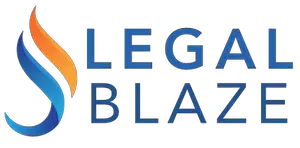Adjusting to inflation and tax changes is a perennial challenge for both individuals and businesses. This article examines the latest shifts in tax regulations, offering insights into how these adjustments aim to maintain economic stability and fairness. From inflation adjustments to disaster relief provisions, understanding these changes is crucial for effective financial planning and strategy.
Inflation Adjustments
For tax year 2024, significant changes are being made to tax brackets to reflect the past year’s inflation. Income thresholds for all seven federal tax brackets are rising. This change ensures taxpayers might get to keep a bit more of their income instead of being pushed into a higher tax bracket due to inflation. For those married and filing jointly, for example, the upper limit to remain in the 12% bracket increased, helping avoid a jump into the 22% bracket for having a slightly better financial year.
The standard deduction is also set to increase for tax year 2024 for all filing statuses. The deduction increases range from $750 for single filers to $1,500 for those married filling jointly. The standard deduction allows for a quick reduction of taxable income, meaning you can lower the amount of income tax owed through this increase alone.
The IRS made additional adjustments beyond tax rates and deductions. For those giving gifts in 2024, the annual exclusion for gifts is increased to $18,000 per person, allowing for more generous gift-giving without tax consequences. The estate tax exclusion is now set at $13.6 million. Caps on savings mechanisms like HSAs and FSAs are also on the rise, showing inflation adjustment across multiple tax-saving strategies.
Businesses need to stay informed as strategic decisions around investment and expansion might be influenced by changes to taxes on research and experimental expenses. An extension in bonus depreciation periods can simplify when and how much companies invest in new assets or technologies.
These tax adjustments are about fine-tuning the system to maintain fairness and support economic stability. By adjusting for inflation, the IRS aims to preserve financial equity, ensuring everyone pays their fair share without being unfairly penalized due to increased cost of living.
Understanding these adjustments is key to wisely planning your finances or business investments in the coming year. Whether deciding how much to contribute to your HSA or considering the timing of major business investments, staying informed of these changes ensures you’re well-positioned to make the most of your money.
Engaging with taxes while considering inflation adjustments can help many avoid unexpected increases in their tax obligations. With rates and deductions appropriately adjusting for inflation, the goal is fairness and fiscal prudence heading into tax season.

Business Tax Relief
Understanding recent adjustments related to Business Tax Relief is crucial for organizational financial strategic planning. These adjustments include several critical tax provisions designed to provide relief and bolster business resilience amidst challenges.
The amendments concerning Research and Experimental (R&E) expenses are notable. Initially, domestic R&E expenditures were subject to immediate deduction, fostering innovation and risk-taking. However, a shift was mandated to spread these costs over five years, potentially dampening enthusiasm for large R&E endeavors. The deferral of this rule until tax years beginning after December 31, 2025, for domestic activities temporarily preserves the incentive for innovation.
Modifications to the business interest limitation are also significant. Recognizing the vital role of interest on loans in fueling business operations and growth, the authorities have made recalibrations. These changes include depreciation, amortization, and depletion in the calculation of adjusted taxable income for a specified duration, extending a lifeline to many businesses poised for expansion or grappling with operational scaling.
Adjustments to first-year depreciation or bonus depreciation further bolster business intentions to scale or modernize. This provision enables an immediate expense deduction of a significant portion of assets placed into service, traditionally seen as an accelerator for business investment decisions. Extending 100% bonus depreciation beyond its expected expiration reflects a commitment to fueling business investment momentum.
The enhancement of Section 179 deduction limits encourages small and medium-sized businesses to invest in their growth. Elevating the deduction and expense limits provides immediate tax savings and serves as an incentive for businesses on the brink of vital investment decisions.
These adjustments in Business Tax Relief reflect an effort to selectively and temporarily reduce business tax burdens, providing a buffer amid financial turbulence while encouraging forward-leaning investments. Navigating these provisions demands nuanced understanding and strategic foresight to fully leverage the intended benefits.
The landscape of Business Tax Relief serves as an enabler of sustained business dynamism and innovation. As organizations make informed decisions, these tax considerations are essential building blocks in developing robust financial strategies designed to withstand and capitalize on the evolving economic terrain.

Employee Retention Tax Credit
The Employee Retention Tax Credit (ERTC) has been a standout measure in business circles. Conceived during the early stages of the COVID-19 pandemic, ERTC aimed to support businesses that retained their workforce amidst economic upheavals. However, as the pandemic narrative evolves, so does the ERTC storyline, revealing adjustments that present both opportunities and cautions.
The ERTC, originally intended as a lifeline, extended into retrospective examinations by granting a credit against payroll taxes for retained employees. As with any swift relief measure, the ERTC became a target for misuse, drawing the IRS’s attention into a crackdown against fraudulent claims.
A pivotal change in the ERTC is the commanded cessation of claims as of January 31, 2024. Businesses hoping for prolonged support have to realign their strategies sooner than expected. This endpoint signifies more than just a closing date; it underscores a broader endeavor to tidy up the aftermath of precedent emergency relief efforts.
Parallel to this shutdown are measures targeted at strengthening defenses against fraud connected with the ERTC. Increases in penalties loom over promoters caught in fraudulent maneuvers, painting a clear picture of the tightening landscape. Furthermore, extending the ledgers on which the IRS can make assessments to six years enables a deeper dig into claims.
This increase in scrutiny and penalties bolsters fiscal deterrence and emphasizes responsibility and accuracy in claim filing. The message to businesses is clear: tread carefully.
The IRS has offered an amnesty program before halting claims, providing a strategic retreat route for businesses that may inadvertently find themselves entangled in inaccurate claims.
As businesses navigate the changes surrounding the ERTC, the overarching implication is evident. The retracting of such supportive measures signals a critical juncture—the transition from pandemic-era contingencies towards longer-term fiscal prudence.
The impending changes encapsulate a dual narrative: an era of sustained government support coming to an end and a preemptive stance against fiscal slippage taking charge. For businesses, the end of the ERTC marks the close of a chapter and beckons a strategic pivot—a reevaluation of resilience and innovation paths without the previous fiscal support.
Delving into the world of ERTC amid contemporary modifications is a journey marked by cautionary tales and strategic redirections. Amid the unfolding layers of adjustments and crackdowns, businesses stand at a crossroads, pondering paths less dependent on external aids, steering towards inherent robustness and adaptability in navigating the vagaries of economic climates.
Disaster Relief Provisions
The expanded horizon of disaster relief provisions provides remediation for those affected by federally declared disasters. Within this suite of adjustments is a trio of supports aimed at mitigating the economic impact on individuals and businesses.
Central to these provisions is the offering of penalty forgiveness for early withdrawals from retirement accounts. Ordinarily, early withdrawals would invite penalties; however, recognizing the need for immediate financial relief in the face of disaster, these withdrawals are exempt from the usual penalties. Such measures offer a financial lifeline to those facing uncertain circumstances.
Alongside personal relief, the disaster relief regulations invoke support for local businesses through the reinvigoration of the Employee Retention Credit (ERC) for employers within the devastated territories. This iteration of the ERC mitigates payroll tax burdens and encourages businesses to retain their employees amidst operational turbulence. By bolstering employer resilience, this measure helps ensure the backbone of the local economy remains intact, ready to rebuild stronger foundations.
Lastly, navigating through the aftermath of disaster necessitates confronting tangible losses. Special casualty loss rules emerge as a cornerstone of disaster relief, allowing for an enhanced tax deduction for those whose properties have been affected by the calamity. This enhanced deductibility is part of the rebuilding process, acknowledging loss and facilitating restoration.
The extended disaster relief provisions demonstrate a commitment to supporting individuals and businesses in their time of need. By bridging the gap caused by unforeseen devastations, these measures provide a pathway to recovery, combining penalty forgiveness, employment retention encouragement, and amplified casualty loss deductions.
In the grand tapestry of disaster response and recovery, these strategic adjustments underscore a simple yet profound truth: amidst the echoes of disarray, the spirit of rebuilding prevails. With these provisions in place, the journey towards recuperation, though challenging, is supported by a foundation of empathy and robust policy provisions.
1099-MISC and 1099-NEC Adjustments
The filing threshold for 1099-MISC and 1099-NEC forms has increased from $600 to $1,000 for services rendered after December 31, 2023. This change simplifies compliance for businesses, especially smaller ones, by reducing administrative burdens during tax season.
For independent contractors, this adjustment minimizes paperwork and the risk of inadvertent missteps in tax compliance. It also allows them to focus more on their work and less on clerical tasks.
This alteration is expected to have positive economic impacts by fostering smoother transactions and reinforcing the relationship between businesses and contractors. It allows businesses to reallocate resources from compliance to strategic pursuits that fuel growth, while contractors can focus on innovation without the distraction of excessive paperwork.
The increased filing threshold acknowledges the challenges faced by businesses and contractors, aiming to streamline operations and promote mutual prosperity. It represents progress in fiscal policy by balancing regulatory oversight with operational efficiency.
Affordable Housing Credits
Recent legislative changes have increased low-income housing tax credit ceilings by 12.5% for calendar years 2023 through 2025 and reduced the bond-financing threshold to 30% for projects financed by bonds with an issue date before 2026. These adjustments support the development of affordable housing and contribute to diverse and thriving communities.
The higher tax credit ceiling makes affordable housing projects more attractive to developers, providing them with greater resources to create housing solutions. The reduced bond-financing threshold lowers the barrier to entry for investors and developers, encouraging them to participate in affordable housing initiatives.
These changes go beyond just increasing the quantity of affordable dwellings; they aim to enhance the quality of life for individuals and families. Affordable housing is more than just structures—it’s about creating communities where diversity, dignity, and opportunity come together.
The adjustments align financial incentives with social responsibility, promoting innovation, integrity, and sustainability in affordable housing development. They reflect a commitment to making affordable housing accessible to all and creating vibrant, inclusive communities.

In conclusion, the essence of this discussion revolves around the strategic adjustments made in tax regulations to align with economic shifts and maintain fairness. By keeping informed about these changes, individuals and businesses can navigate their financial planning with greater confidence, ensuring they are well-positioned to adapt and thrive in the ever-evolving economic landscape.









